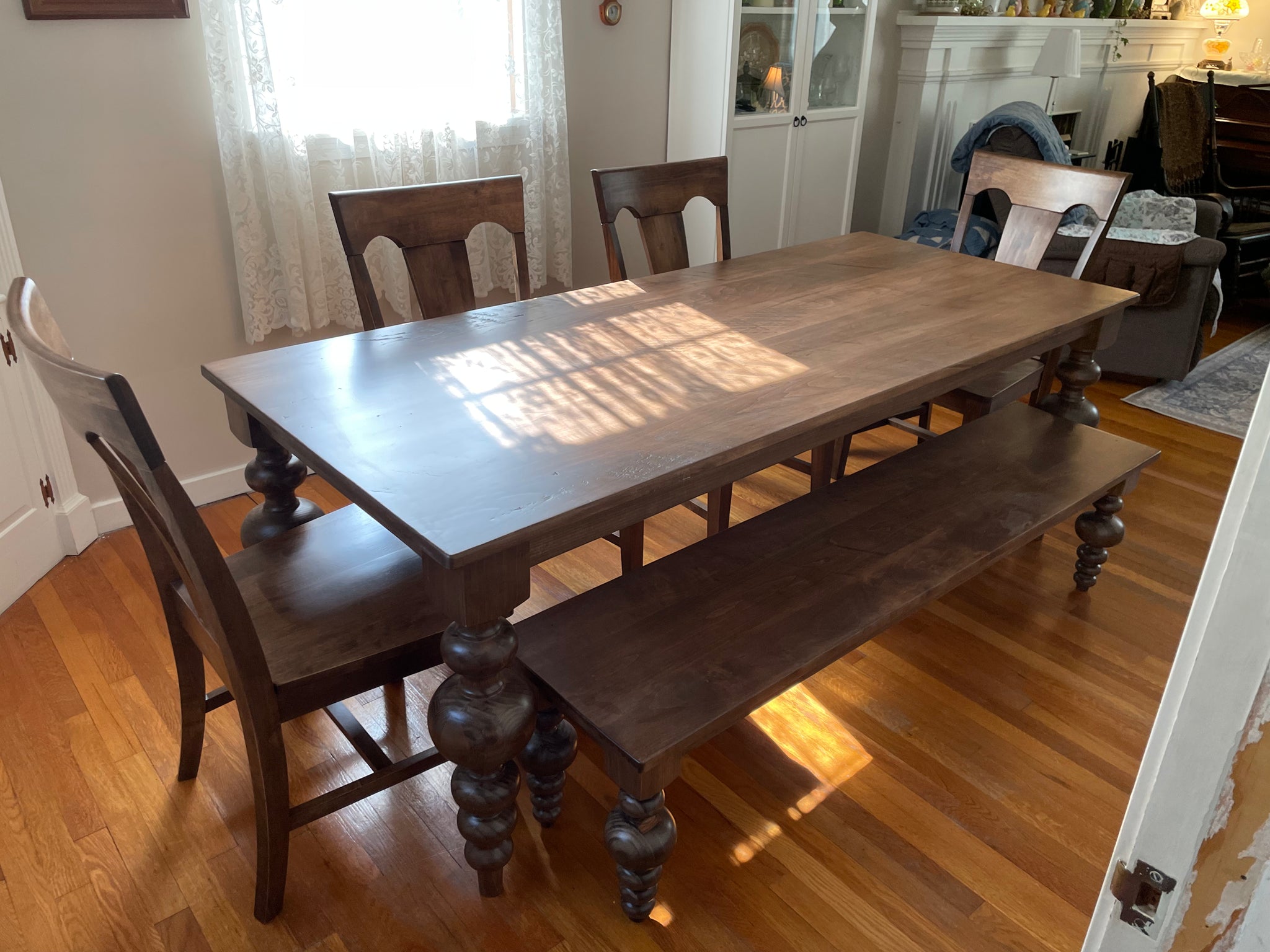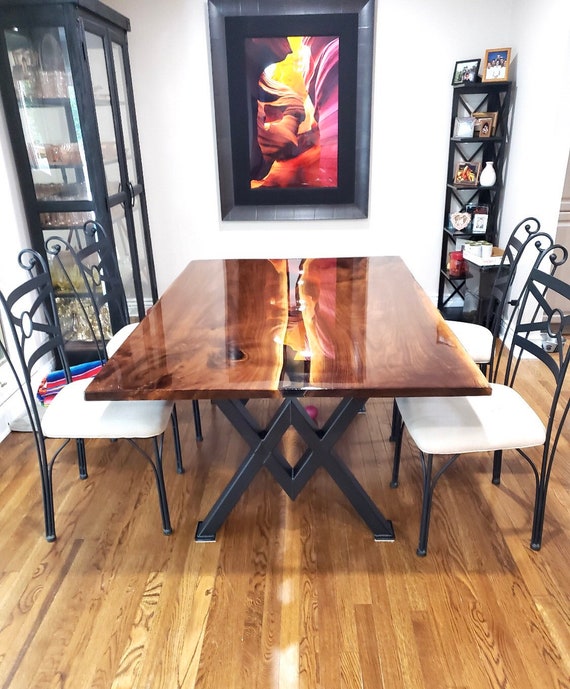Creative Ideas for Replacing or Refurbishing Your Dining Room Table Legs
Creative Ideas for Replacing or Refurbishing Your Dining Room Table Legs
Blog Article
From Typical to Modern: Discover the Ideal Eating Space Table Legs for Your Style
The option of dining room table legs plays a crucial role in specifying the overall character of your room, linking the void in between conventional workmanship and contemporary appearances. While timeless layouts such as cabriole and turned legs stimulate a feeling of ageless refinement, contemporary styles like barrette and geometric alternatives provide a possibility for striking visual interest. Reviewing the best balance between these styles needs a nuanced understanding of your existing décor and personal preference. As you think about these aspects, the concern continues to be: exactly how can you flawlessly incorporate these varied leg styles to produce an unified dining experience?
Understanding Table Leg Styles
The variety of dining-room table leg styles can significantly influence both the appearances and functionality of the area. Each leg style adds special practical attributes and aesthetic aspects, dealing with varied layout choices and usage requirements. Comprehending these designs is critical for picking the ideal eating table that aligns with your total interior layout vision.
As an example, tapered legs supply a tidy, traditional look that can enhance an area's style, while pedestal bases offer security and make the most of legroom, making them ideal for smaller sized areas. Barrette legs, a characteristic of mid-century modern-day layout, introduce a commercial panache, allowing for a ventilated, open feel. Similarly, trestle legs stimulate rustic appeal, offering robust assistance and a sense of timelessness.
Wood legs can bring warmth and texture, whereas metal alternatives frequently convey a streamlined, modern vibe. Eventually, understanding table leg styles is necessary for creating a cohesive eating area that shows individual design while ensuring practicality and convenience.
Typical Table Leg Options
When selecting dining space table legs, typical choices typically personify classic elegance and workmanship. These designs show an abundant heritage and a dedication to top quality, making them optimal for those that appreciate classic aesthetic appeals.
Among one of the most famous traditional leg styles is the cabriole leg, characterized by its stylish rounded form. This design frequently features ornamental makings and is most typically discovered in Queen Anne and Chippendale furniture. Another popular option is the turned leg, which boasts a series of smooth, rounded forms that give a timeless look while maintaining security.
In addition, the straight leg, while straightforward, uses a basic and durable structure that can mix perfectly with a selection of tabletop designs. For those attracted to ornate outlining, claw-and-ball feet legs evoke a feeling of majesty and can offer as a spectacular prime focus in any type of dining room.
Last but not least, stand bases, although not purely legs, give a different standard option that permits ample legroom and can be perfectly sculpted. Each of these conventional leg designs adds to the overall setting of an eating space, marrying feature with aesthetic appeal.

Modern Table Leg Layouts
Modern table leg layouts use a diverse variety of styles that highlight clean lines and ingenious materials. These layouts typically prioritize capability while working as striking centerpieces within a dining area. Minimalist aesthetics are widespread, with legs crafted from products such as metal, glass, and crafted timber, which contribute to a ventilated and contemporary feeling.
One prominent design is the hairpin leg, identified by its slender, tapered structure that gives stability without overwhelming the table top (dining room table legs). This design is frequently found in mid-century modern furniture and can easily enhance various eating table forms. Another fad is making use of geometric shapes, where legs may take on unbalanced or angular kinds, including aesthetic passion and a touch of creativity

Mixing Designs for Unique Spaces
Often, homeowners look for to develop unique dining rooms that mirror their personal style by mixing numerous design aspects. This strategy permits the consolidation of varied visual appeals, resulting in an unified yet unique environment. Pairing a rustic wood table with smooth, contemporary steel legs can produce an attractive comparison that raises the area's general charm.
In addition, integrating vintage table legs with contemporary table tops can stimulate a feeling of history while keeping a modern perceptiveness. Such combinations not just display private preference however additionally motivate creative thinking, enabling property owners to curate a room that feels both individual and inviting.
Shade plays a vital page role in this mixing process; picking table legs that match or comparison with the existing color pattern can enhance aesthetic interest. As an example, whitewashed legs can soften the daring of a dark table surface, developing a balanced visual.
Tips for Choosing the Right Legs
Selecting the right table legs is vital for achieving both functionality and visual charm in your eating room. Begin by considering the general design of your area. Conventional settings benefit from legs that include complex carvings or transformed designs, while contemporary spaces may require smooth, minimal designs.
Following, assess the height and stability of the legs. dining room table legs. Common eating tables vary between 28 to 30 inches in height, so guarantee the legs match this measurement for comfort. Furthermore, durable products, such as wood or steel, can boost security and long life
Review the leg form too-- alternatives consist of right, tapered, or stand layouts. Straight legs offer a classic look, while conical legs can include a touch of style. Pedestal bases give site web ample legroom and are perfect for smaller sized areas.
Conclusion
In recap, choosing the suitable eating space table legs calls for careful factor to consider of both modern-day and standard styles. Conventional choices such as cabriole and turned legs offer classic style, while modern designs like barrette and geometric shapes offer a contemporary touch. By integrating leg design, elevation, and material with the overall decor, a natural and inviting atmosphere can be achieved. Inevitably, the selected table legs should mirror the preferred aesthetic, enhancing the eating experience within the area.
The range of eating room table leg styles can significantly affect both the aesthetic appeals and functionality of the area. Ultimately, recognizing table leg styles is crucial for producing a natural dining location that mirrors personal design while guaranteeing usefulness and comfort.One of the most famous traditional leg designs is the cabriole leg, defined by its graceful rounded form. Straight legs offer a traditional appearance, while tapered legs can include a touch of elegance.In summary, picking the perfect eating area table legs requires cautious factor to consider of both traditional look at these guys and contemporary designs.
Report this page